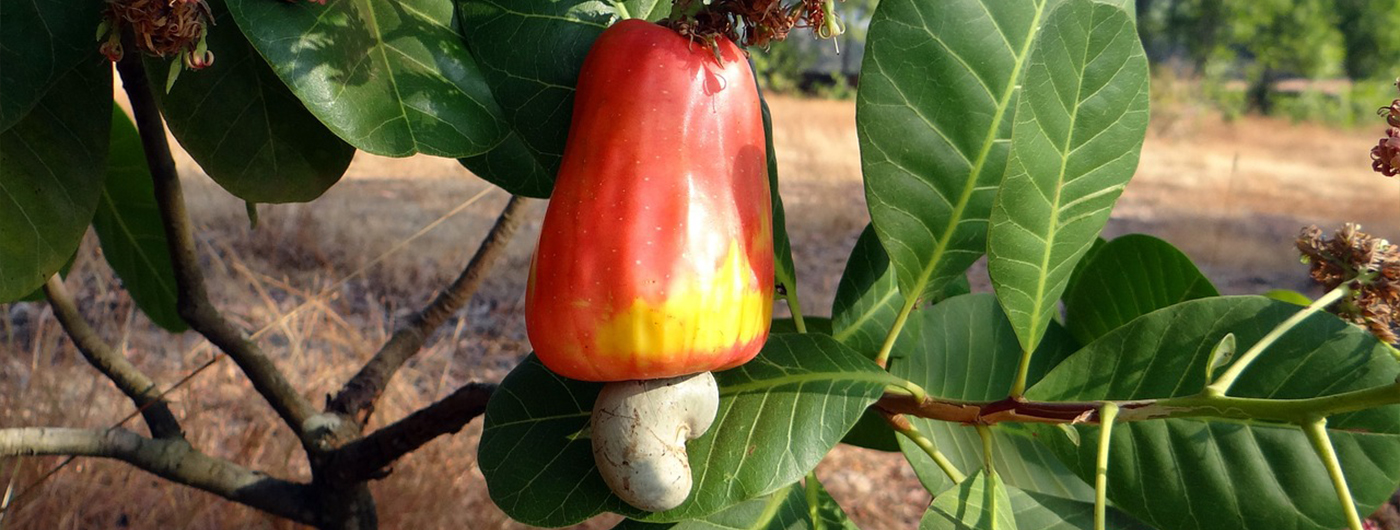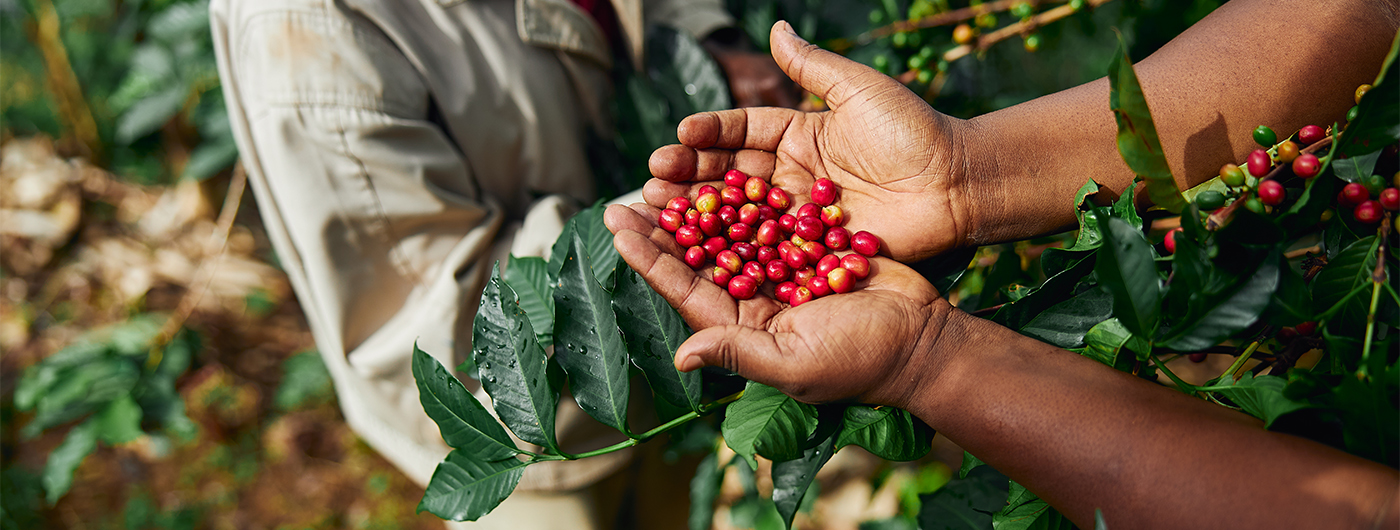

The Dynamics of Cashew Procurement: A Comprehensive Analysis of Vietnam, Southeast Asia, and Africa
Vietnam: A Global Cashew Powerhouse
In the competitive realm of cashew production and export, Vietnam stands tall as a global powerhouse, wielding significant influence over the industry. The latest data from the International Cashew Council (ICCO) for the year 2023 underscores Vietnam’s exceptional performance, solidifying its status as a key player in the international cashew market.
Production Dominance:
Vietnam’s cashew production in 2023 reached an impressive 730,000 tons, showcasing a remarkable 48.7% of Southeast Asia’s total cashew output. This not only cements Vietnam’s position as the leading cashew producer in the region but also propels it to a commanding 36.1% share of the entire global market. The country’s robust production capabilities are a testament to its dedication and efficiency in meeting the rising global demand for cashews.
Export Prowess:
Vietnam’s export figures are equally striking. The country shipped an astounding 620,000 tons of cashews in 2023, generating a substantial USD 2.7 billion in revenue. This export performance translates to an impressive 51.7% share of the Southeast Asian export market and reaffirms Vietnam’s pivotal role in the global cashew trade. The numbers reflect not only the quantity but also the quality of Vietnam’s cashew products, further enhancing the country’s reputation as a reliable and high-quality supplier.
Strategic Government Policies:
Vietnam’s success story in the cashew sector is intricately linked to a set of strategic and comprehensive government policies. The Vietnamese government has proactively implemented financial incentives to stimulate the cashew industry. These incentives include preferential loans, support for interest rates, and tax reductions, all designed to encourage investments in both cashew cultivation and processing.
Moreover, the government has taken a proactive approach in supporting science and technology initiatives, research and development, and market promotion. These multifaceted policies have played a pivotal role in enhancing the productivity and quality of Vietnam’s cashew output, setting a benchmark for other cashew-producing nations.
Looking Forward:
As Vietnam continues to assert its dominance in the global cashew market, the trajectory points towards sustained growth. The country’s ability to balance quantity with quality, coupled with strategic government interventions, positions Vietnam as not only a major supplier but also a trendsetter in the evolving landscape of the cashew industry.
The future for Vietnam as a global cashew powerhouse looks promising, and its continued contributions will not only bolster the nation’s economy but will also play a vital role in meeting the nutritional needs and culinary preferences of consumers worldwide. The Vietnamese cashew industry serves as a beacon, guiding other nations in navigating the intricate dynamics of this lucrative and competitive market.
Southeast Asia’s Cashew Landscape: Thriving Markets and Regional Cooperation
Southeast Asia emerges as a dynamic hub in the global cashew industry, with Vietnam, alongside other regional players, contributing significantly to the sector’s vibrancy. The latest data from the International Cashew Council (ICCO) paints a comprehensive picture of the cashew landscape in Southeast Asia, showcasing the region’s collective prowess in both production and export.
Collective Production and Export Dynamics:
In 2023, Southeast Asian nations collectively produced 1.5 million tons of cashews, representing a substantial 36.6% of the global production share. This output, valued at USD 6.3 billion, emphasizes the economic significance of cashew cultivation in the region. The collaborative efforts of countries like Vietnam, Indonesia, and the Philippines have resulted in a thriving cashew belt, contributing substantially to the global supply chain.
In terms of exports, Southeast Asia shipped out 1.3 million tons of cashews in 2023, generating revenue amounting to USD 5.4 billion. This accounts for a formidable 41.7% of the global cashew export market. The region’s ability to not only meet domestic demand but also actively participate in international trade highlights the collective strength and strategic positioning of Southeast Asian nations in the cashew industry.
Regional Collaboration and Challenges:
Southeast Asian countries have recognized the importance of collaboration to ensure the sustainable growth of the cashew sector. Regional initiatives aimed at knowledge-sharing, technology transfer, and joint research and development have facilitated the collective improvement of cashew production practices. However, challenges such as climate change impacts and labor shortages pose common hurdles that require collaborative solutions.
▬ Indonesia’s Rising Profile: Among Southeast Asian nations, Indonesia emerges as a rising star in the cashew industry. The country’s production reached 180,000 tons in 2023, contributing significantly to the regional output. With a strategic focus on increasing productivity and enhancing processing capabilities, Indonesia aims to further strengthen its position in the global cashew market.
▬ Philippines: Niche Markets and Quality Emphasis: The Philippines, while not among the top producers in terms of quantity, has carved a niche in the cashew market by emphasizing quality. The country’s focus on producing premium-grade cashews has positioned it as a preferred source for high-quality products, catering to specific market segments that value excellence.
Challenges and the Path Forward:
Southeast Asia’s cashew industry faces challenges such as climate-related risks and the need for sustainable farming practices. To overcome these hurdles, regional cooperation must extend beyond knowledge exchange to include coordinated efforts in research, technology adoption, and climate resilience strategies.
Southeast Asia’s cashew landscape is marked by collaboration, diversity, and a commitment to quality. As the region navigates challenges and explores opportunities, its collective influence will undoubtedly shape the future trajectory of the global cashew industry. The collaboration among Southeast Asian nations stands as a testament to the region’s understanding of the shared responsibility in ensuring the sustainable growth of this vital sector.
Cashew Dynamics in Africa: Powerhouses of Production and Export
Africa, particularly the West African nations of Côte d’Ivoire, Ghana, Nigeria, and Madagascar, stands as a formidable force in the global cashew industry. The International Cashew Council’s (ICCO) data for 2023 reveals the continent’s substantial contributions to both production and export, underscoring its pivotal role in shaping the cashew market.
Production Powerhouses:
In 2023, Africa collectively produced 1.2 million tons of cashews, commanding a significant 29.2% share of the global production. This output, valued at USD 4.8 billion, showcases the economic significance of cashew cultivation in the region. Côte d’Ivoire leads the pack with a production of 600,000 tons, accounting for 50% of the region’s total.
Ghana follows closely with 200,000 tons, while Nigeria and Madagascar contribute 100,000 tons and 50,000 tons, respectively. The consistent growth in production is attributed to high global demand and favorable market conditions, despite a slight dip in global cashew production.
Export Dynamics:
African nations collectively exported 1.1 million tons of cashews in 2023, generating a substantial USD 4.2 billion in revenue. This represents 35.6% of the global cashew export market. Côte d’Ivoire again leads the export front, shipping 550,000 tons valued at USD 2.2 billion, capturing 50% of the region’s total exports.
Ghana, Nigeria, and Madagascar contribute significantly, highlighting the diversity in the export landscape. These figures affirm Africa’s role not only as a major producer but also as a key player in the international cashew trade.
▬ Production and Export by Type: Breaking down production and export figures by type provides a nuanced understanding of Africa’s cashew market. Côte d’Ivoire, for instance, produces 400,000 tons of raw cashews, 200,000 tons of white kernels, and 50,000 tons of salt-roasted cashews. This diversity in production aligns with global market demands and positions Africa as a versatile supplier catering to various consumer preferences.
▬ Government Policies Driving Growth: To bolster cashew production and export, African nations have implemented supportive policies. In Côte d’Ivoire, for instance, the government has introduced policies covering financial incentives, science and technology advancements, and market promotion. These measures aim to attract investments, enhance processing capabilities, and expand export markets.
▬ Challenges and Future Strategies: Despite remarkable achievements, African cashew producers face challenges. Unfavorable weather conditions, labor shortages, and limited capital pose significant hurdles. To overcome these challenges, the focus should be on investing in research and development, adopting advanced technologies, and improving market access.
Africa’s role in the global cashew industry is indispensable. The continent’s production and export prowess, coupled with strategic government policies, positions it as a key player. Addressing challenges and capitalizing on opportunities will pave the way for sustained growth, ensuring that Africa continues to be a powerhouse in the global cashew market.
Challenges and Opportunities in the Global Cashew Industry: A Comprehensive Overview
The global cashew industry, while thriving, is not without its share of challenges and opportunities. Understanding the dynamics of this ever-evolving landscape is crucial for stakeholders ranging from farmers to policymakers. Here’s an in-depth exploration of the challenges and opportunities shaping the trajectory of the cashew industry worldwide:
Challenges:
1. Market Competition: With cashew production expanding across various regions, market competition has intensified. Countries like Vietnam, India, and Brazil are emerging as formidable players, posing challenges for traditional cashew-producing regions such as Africa. The need for strategic differentiation and value addition is pressing to remain competitive.
2. Weather-Related Risks: As explored earlier, weather volatility, including droughts, floods, and temperature extremes, presents a substantial risk to cashew production. The unpredictability of climate patterns underscores the vulnerability of cashew farmers and requires concerted efforts to build resilience.
3. Labor Shortages: Many cashew-producing regions, particularly in Southeast Asia and Africa, face challenges related to labor shortages. The sector requires a significant workforce, and addressing issues such as low wages and inadequate working conditions is essential for sustaining and expanding production.
4. Processing Infrastructure: The cashew processing industry faces hurdles related to outdated infrastructure and technology. Modernizing processing facilities is crucial for enhancing efficiency, reducing waste, and meeting the increasing global demand for processed cashew products.
Opportunities:
1. Rising Global Demand: The increasing awareness of the nutritional benefits of cashews has led to a surge in global demand. Capitalizing on this trend presents a significant opportunity for cashew-producing countries to expand their market share and contribute to the economic growth of their regions.
2. Value Addition and Processing: There is untapped potential in the cashew sector for value addition through processing. Countries can move beyond exporting raw cashews by investing in advanced processing technologies to manufacture a range of cashew-based products, catering to diverse consumer preferences.
3. Sustainable Practices: Growing consumer consciousness about sustainability creates an opportunity for the cashew industry to embrace environmentally friendly and socially responsible practices. Certification schemes and adherence to sustainability standards can not only attract eco-conscious consumers but also open doors to premium markets.
4. Technology and Innovation: The adoption of advanced agricultural practices, including precision farming, data analytics, and biotechnology, can revolutionize cashew cultivation. Embracing innovation in processing technologies ensures higher-quality products and increased competitiveness in the global market.
5. Regional Collaboration: Cashew-producing regions can explore collaborative initiatives to address common challenges. Sharing best practices, harmonizing quality standards, and collectively marketing cashew products can enhance the overall competitiveness of these regions on the global stage.
6. Government Support and Policies: Governments play a pivotal role in shaping the trajectory of the cashew industry. Implementing supportive policies, providing financial incentives, and investing in research and development contribute to the sustainable growth of the sector.
The challenges and opportunities in the global cashew industry are intricately linked to the dynamic forces shaping the agricultural landscape. Strategic planning, international collaboration, and a commitment to sustainable practices are essential for stakeholders to navigate challenges and leverage opportunities for the long-term prosperity of the cashew sector.
Key Strategies for Sustainable Development in the Global Cashew Industry
Achieving sustainability in the global cashew industry demands the implementation of strategic initiatives across various facets of the supply chain. Here, we delve into key strategies that can drive positive change and foster long-term sustainability:
1. Adopting Climate-Smart Agriculture: Embracing climate-smart agricultural practices is pivotal for mitigating the impact of climate change on cashew cultivation. This involves the integration of weather-resistant varieties, precision farming techniques, and sustainable water management practices. Governments and agricultural bodies need to provide training and resources to farmers for the successful adoption of these practices.
2. Enhancing Research and Development: Investing in research and development (R&D) is crucial for innovation in the cashew industry. R&D initiatives should focus on developing disease-resistant varieties, improving processing technologies, and finding innovative uses for by-products. Collaborative efforts between research institutions, governments, and private enterprises can drive advancements that contribute to the industry’s sustainability.
3. Strengthening Value Chain Integration: A connected and streamlined value chain is fundamental to sustainable cashew production. Strengthening the integration between farmers, processors, and marketers ensures efficient processes, minimizes waste, and promotes fair returns for all stakeholders. This approach also facilitates traceability, allowing consumers to make informed choices about the products they purchase.
4. Promoting Certification Programs: Encouraging and incentivizing the adoption of certification programs, such as Fair Trade and Organic, is instrumental in signaling the industry’s commitment to sustainability. Certifications provide assurance to consumers that the cashew products meet specific ethical and environmental standards. Governments can play a role in promoting and subsidizing certification initiatives.
5. Implementing Circular Economy Practices: Embracing circular economy principles involves minimizing waste and maximizing resource efficiency. Utilizing cashew by-products, such as shells, for energy generation or other applications is a sustainable practice. Research and investment in technologies that allow for the reutilization of waste materials contribute to a more circular and environmentally friendly cashew industry.
6. Empowering Local Communities: Sustainable development should be inclusive, benefiting local communities directly involved in cashew production. Initiatives that empower communities through education, healthcare, and fair labor practices create a positive impact. Collaborative projects between governments, non-profits, and businesses can ensure that the benefits of the cashew industry are shared equitably.
7. Emphasizing Precision Farming: Precision farming involves the use of technology to optimize inputs such as water, fertilizers, and pesticides. This not only enhances productivity but also minimizes environmental impact. Governments and private entities can support farmers in adopting precision farming techniques through subsidies, training programs, and access to technology.
8. Fostering Innovation in Processing: Innovations in cashew processing contribute to both economic and environmental sustainability. This includes the development of energy-efficient processing technologies and the exploration of new product lines from cashew by-products. Government research grants and incentives for private enterprises can drive innovation in processing.
9. Building International Collaborations: The challenges faced by the cashew industry are global, and solutions require international cooperation. Establishing collaborations between cashew-producing regions, sharing knowledge, and coordinating efforts on a global scale can accelerate progress toward sustainability. International organizations and forums play a crucial role in facilitating such collaborations.
The success of sustainable development in the global cashew industry hinges on the effective implementation of these key strategies. By aligning stakeholders, leveraging technology, and prioritizing social and environmental responsibility, the industry can carve a path toward a sustainable future. As these strategies are embraced, the global cashew sector stands poised to overcome challenges and create lasting positive impacts on both the environment and communities involved in cashew production.
In conclusion, the cashew industries in Vietnam, Southeast Asia, and Africa play pivotal roles in the global market. While challenges persist, strategic policies, technological advancements, and collaborative efforts present opportunities for sustained growth and development. The collective efforts of governments, businesses, and communities will shape the future of the cashew industry, contributing not only to economic prosperity but also to the improvement of livelihoods in these regions.
Dr. James Tran Nguyen
Co-Founder, Chief Strategy Officer & Vice Chairman of KAI Holdings


